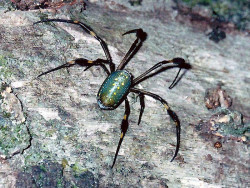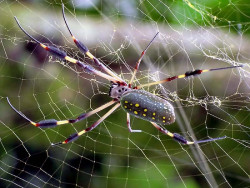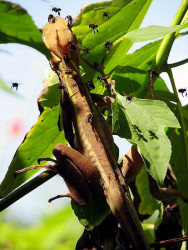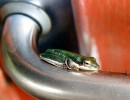- You are here:
- Home
- Nature
- Animal Kingdom
- Creepy Crawlers
Creepy Crawlers
-
1 A cute spider laying trap in a flower in Brazil 800

-
2 Golden Orb Weaver 800

-
3 Golden Orb Spider in his web 800
-
5 Tiny frog resting on a door handle in Papua New Guinea 800
-
9 Moth perched on a bright red flower 800
-
10 Stick bug Phasmida on a brick in Honduras 800
-
11 Camillion catching flies in El Salvador 800
-
13 Euroliochus butterfly from Costa Rica 800
-
14 Honey bees collecting nectar 800
Insects
Adult insects typically move about by walking, flying, or sometimes swimming. As it allows for rapid yet stable movement, many insects adopt a tripedal gait in which they walk with their legs touching the ground in alternating triangles, composed of the front and rear on one side with the middle on the other side. Insects are the only invertebrates to have evolved flight, and all flying insects derive from one common ancestor. Many insects spend at least part of their lives underwater, with larval adaptations that include gills, and some adult insects are aquatic and have adaptations for swimming. Some species, such as water striders, are capable of walking on the surface of the water. Insects are mostly solitary, but some, such as certain bees, ants, and termites, are social and live in large, well-organized colonies. Some insects, such as earwigs, show maternal care, guarding their eggs and young. Insects can communicate with each other in a variety of ways. Male moths can sense the pheromones of female moths over great distances. Other species communicate with sounds: crickets stridulate, or rub their wings together, to attract a mate and repel other males. Lampyrid beetles communicate with light.
























